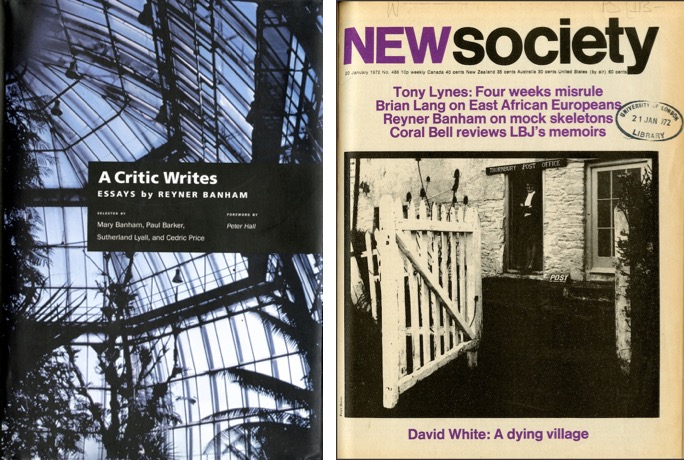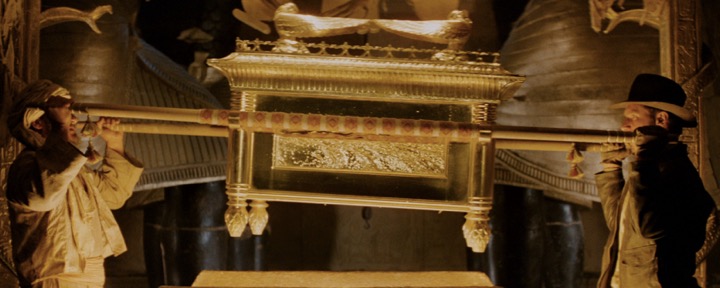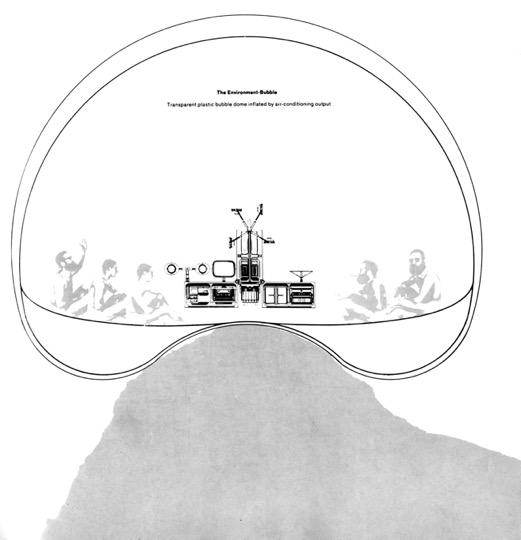Thoughts on the Black Box 2 April 2019

I approached the task of responding to a paper session on conventions of research in architectural education by following the prompt of the session’s co-chairs, and returning to the thing itself, to the “black box” that the conference organizers used as a starting point for the theme of the 107th annual meeting of the Association of Collegiate Schools of Architecture.

Reyner Banham wrote this eponymous essay (“A Black Box: The Secret Profession of Architecture”) on his deathbed in 1988, black ink on a yellow legal pad in a surprisingly steady hand for a guy already hooked up to life support (the original manuscript is preserved with his papers at the Getty Research Institute). And what was he contemplating as he penned what would be the last of the more than 700 essays he wrote in a four decade career? The secret profession of architecture.

Most of us likely know this essay because it was reprinted in the Banham anthology A Critic Writes (Berkeley: University of California Press, 1996), a book probably not much read by anyone outside the spheres of architecture and design. But as with so much of Banham’s critical, as opposed to historical writing, this essay was likely intended for a much larger audience, and it was published (posthumously in 1990), in the New Statesman and Society (12 October 1990, pp. 22-25). This was the journal of social inquiry and cultural critique aimed at the so-called “new intelligentsia” in which Banham had published much of his freelance journalism. This is important because, as Banham himself acknowledged, he wrote in different ways for different audiences, and it is fair to say that the less specialized the readership, the greater the snark.

“Black Box” contains some of Banham’s most memorable turns of phrase. To give you two examples: postmodernism, in its reliance on the erudition implicit in borrowing the formal elements of historical eclecticism, had “the same relation to architecture as female impersonation to femininity.” It was not architecture, but “building in drag.” In taking Nikolaus Pevsner to task for what Banham regards as Pevsner’s “academic snobbery” in making a pernicious (if famous) distinction between the Lincoln Cathedral as “architecture” with a capital A and a bicycle shed as mere building (in An Outline of European Architecture, 1963), Banham argues that Pevsner makes “a supposition about sheds that is so sweeping as to be almost racist.” Obviously, Banham’s privileged position as a white cisgendered Englishman enabled his casual use of drag and race as literary devices. But it’s still damn good writing, this use of highly evocative language from outside of architecture to explain architecture to those who are not necessarily architects.

I do not want to imply that “Black Box” was in any way intended as satire, but a careful reading of the essay suggests that Banham—even as he carefully unpacks differences between various modes of designing and building—was utterly uninterested in reifying a disciplinary core for architecture. Indeed, the essay ends on a note that sounds cautionary or ironic depending on your perspective. The “tribe of architecture,” Banham observed in 1988, was well within its rights “to defend the contents of the black box at whatever cost, as if it were the ark of its covenant.” (NB: Steven Spielberg’s Raiders of the Lost Ark was released in 1981.)
And Banham forcefully articulated what was at stake in what he called “the threat of ultimate revelation.” If the tribe of architecture revealed itself “to the understandings of the profane and the vulgar”— making architecture comprehensible to everyone outside the elitist domains of the profession and the academy—it ran the risk of “destroying itself as an art in the process.” But the alternative was equally fraught: if the tribe remained, in effect, a secret society, contentedly cloaked in own exceptionalism, it would, inevitably, be regarded with distrust and apprehension, “perpetually open to the suspicion,” Banham argued, that the black box contained nothing at all beyond “a mystery for its own sake.”
For Banham writing in the late eighties, it mattered little whether the profession and the academy were in the throes of modernism or postmodernism, because the discourse of both amounted to what Banham described as a “secret value system”—one that was equally and deliberately inscrutable to those outside the tribe of architecture. From modernism to postmodernism, and on through deconstructivism, the parametric moment, the digital turn and so on and so forth until the present day.

But thirty years on (from when he penned the essay), we can see even more clearly something that Banham was only beginning to discern—and that, if you’ll indulge one more Raiders of the Lost Ark reference, is the potential for the utter irrelevance of the black box and all the secrets it might contain—packed up in a metaphorical crate, lost in a theoretical warehouse.
But let’s imagine a different scenario for that black box, a scenario in which the black box is not so much dismantled, but replaced it with something far less opaque, something that probes the tensions between the normative and the exceptional in architecture, and in pedagogy, by making their operation explicit. In contemporary software development, this is the difference between black box testing (in which the internal structure, operation and contents remain UNKNOWN and OPAQUE to the user) and white box testing (in which everything is fully revealed to the user).
While Banham’s “Black Box” acknowledges the existence of the computer and its potential impact on architecture, in 1988 it was too early in the information age for him to really comprehend the transformations at hand. And in my reading his “recognized by its output” black box seems more akin to eighties-era high-tech hi-fi, which positively luxuriated in the matte black boxiness.

This doesn’t mean we can’t give him the last word (or trope)–even if we risk anachronism. Given Banham’s well known—and even immoderate—techno-philia what metaphor he would have chosen to replace “the black box” in our cyber-spatial age?

I’ll end by suggesting this one: François Dallegret’s illustration of the “environment-bubble,” drawn to accompany Banham’s “A Home is Not a House” essay (Art in America, April 1965), depicts a transparent, inflatable bubble-of-a-building. Inside this inflated membrane, is Banham himself. Naked but for sunglasses and full beard, he sits before a high-tech pile that resembles nothing so much as the guts of the black box itself. The essay has nothing to do with the secret profession of architecture and everything to do with the energy inefficiencies of the typical midcentury suburban American house.
Nonetheless, the image is relevant to the question at hand. Not because it aptly illustrates what a cynic might regard as architecture’s over-exposure in the twenty-first century, but because it usefully illustrates a possible future for architecture’s disciplinary core in the twenty-first century, willfully even brazenly displaying its contents because architecture has, in effect, nothing to hide. By replacing the black box, architecture—in its production, pedagogy, and research—might finally be able to reverse its disciplinary inward gaze. In a clear bubble you can see forever.
